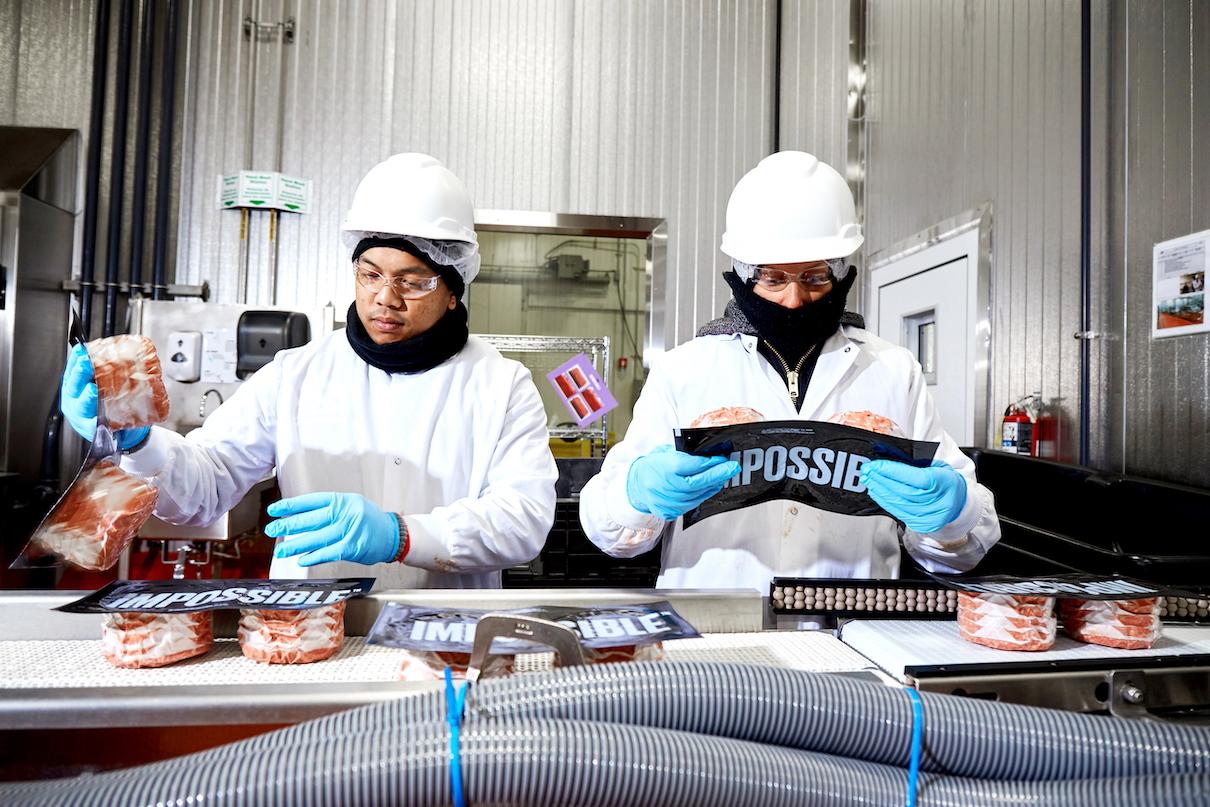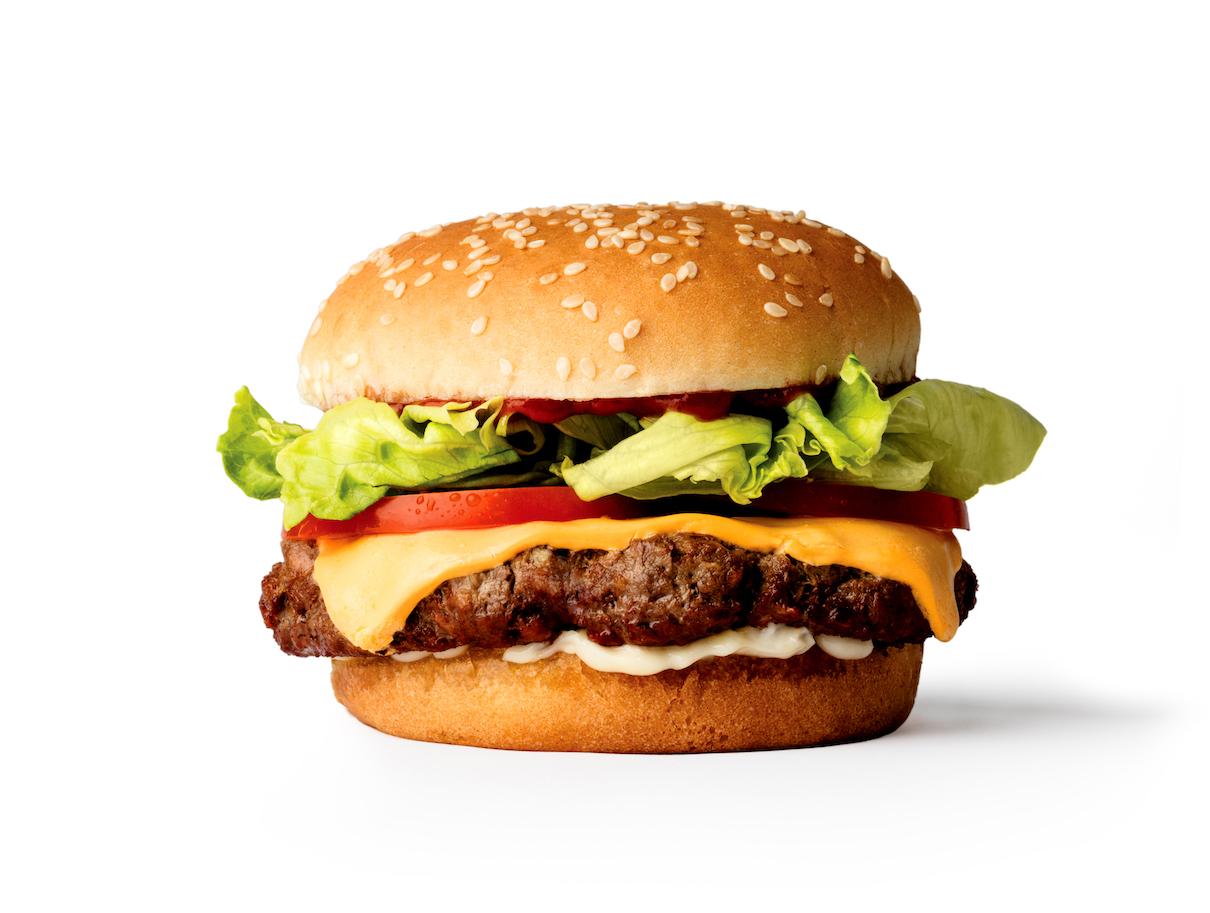What Is Heme? Impossible Foods’ Magic Ingredient Has Caused Some Controversy
Ever wondered exactly what heme is?
Updated July 26 2019, 5:21 p.m. ET

If you’re a fan of the Impossible Burger, you may have heard about the magical ingredient that helps the plant-based patty taste so similar to beef: heme. The topic can be a bit confusing, since heme is not usually something we see on ingredient lists — though if you eat meat, you’ve eaten your fair share of heme. Not to mention, your body produces its own heme. Heck, it might even be producing heme right now!
To learn more about heme, the ingredient taking the vegan food industry by storm, read on.
What Is Heme?
Heme is an essential molecule that contains iron, that is naturally found in fairly high concentrations in the blood of humans and other animals, and in much lower concentrations in plants, as explained by Oddity Central. Heme is also what makes blood red, makes meat pink, and gives blood a subtle metallic flavor (which you can taste when eating meat, or if you’ve ever tasted your own blood, perhaps after accidentally biting your tongue). But most importantly, according to Impossible Foods, heme is “what makes meat taste like meat.”
Where Does Heme Come From?
Heme is mostly found in human and animal blood, but many plants contain heme as well. One plant with a significant concentration of heme is the soybean, which contains leghemoglobin in its roots. For that reason, Impossible Foods chose soy (as well as yeast) to make its soy leghemoglobin, aka heme.
Is Heme Genetically Modified?
Yes. As Impossible Foods explains in its FAQ, the heme used is genetically modified, or GMO. While GMOs are a controversial topic, Impossible believes that it “wouldn’t be able to make a product that rivals or surpasses beef for flavor, texture, nutrition, sustainability versatility and accessibility without it.”
What Is a Genetically Modified Organism, or GMO?
A GMO is an organism whose genes have been modified in a lab using genetic engineering or transgenic technology. Scientists genetically modify organisms in order to make a new organism with a trait that does not naturally occur. Most often, GMOs are created to be resistant to pesticides; but in the case of heme, Impossible creates a GMO to replicate the taste of meat.
How Does Impossible Foods Make Heme?
As explained by Impossible Foods, this is how the company genetically engineers heme from soybeans and yeast: “We started by using the heme-containing protein from the roots of soy plants. It’s called soy leghemoglobin. We took the DNA from soy plants and inserted it into a genetically engineered yeast. And we ferment this yeast—very similar to the way Belgian beer is made. But instead of producing alcohol, our yeast multiply and produce a lot of heme.”
Basically, DNA from a soybean plant is inserted into genetically engineered yeast, which is then fermented, and in turn multiplies itself to produce more heme. Then, Impossible isolates the soy leghemoglobin from that, and adds it to the other ingredients that make up the Impossible Burger, and that combination results in a meaty flavor and texture.
Is Impossible Foods' Heme Safe to Eat?
Dr. Michael Eisen, Ph.D., a Professor of Molecular and Cell Biology at UC Berkeley, is an official advisor for Impossible Foods. He wrote a guest post for the brand on Medium, further explaining the history of genetic modification, and why Impossible is promoting it. Dr. Eisen maintains that Impossible Burgers are perfectly safe to eat, despite being made with GMOs. In fact, they’re much safer to eat than beef burgers, which can cause diseases including type 2 diabetes, cancer, hypertension, and heart disease, according to the American Dietetic Association,

Is Impossible’s Heme Sustainable?
As Dr. Eisen explained, meat alternatives that taste just as good as the real thing are an effective way to get people to eat less meat. And the only way for Impossible to keep producing the Impossible Burger (and therefore possibly reducing the amount of beef humans are demanding) is to keep genetically engineering heme.
“Since Impossible Burgers made with leghemoglobin generate 87 percent less greenhouse gases, require 95 percent less land and use 75 percent less water to produce than burgers from cows, it would be grossly irresponsible to the planet and its people not to pursue this path,” Dr. Eisen wrote.
Is Heme Good for You?
Since heme naturally contains iron, eating an Impossible Burger provides some iron to the body — to be exact, one Impossible Burger provides 4.2 milligrams of iron, which is 25 percent of the daily value.
Heme vs. Non Heme Iron
According to Healthline, heme iron is a bit more easily absorbed by the body than non heme iron is. That said, it’s still 100 percent possible to meet your daily iron needs on a vegan diet. Significant plant sources of non-heme iron include spinach, quinoa, seeds, legumes, nuts, and soy products.
Is the Impossible Burger Good for You?
Like most other mock meats, the Impossible Burger is not a health food — but it does have the advantage of being cholesterol free, hormone-free, and it provides other nutrients such as protein (19 grams), vitamin B12 (3 micrograms), and potassium (610 micrograms).
Is Heme Vegan?
In the case of the Impossible Burger, yes, heme is completely free from animal products. However, Impossible Foods did face some controversy for testing heme on rats. While some animal advocates believe those tests disqualify the burger from being vegan, others think the potential benefit (the Impossible Burger significantly reducing the demand for beef) would outweigh the tests Impossible conducted.

Does the Beyond Burger Have Heme?
The Beyond Burger and the Impossible Burger are neck and neck in terms of becoming the premiere plant-based beef alternative. One major difference? Beyond Meat does not use heme or any other GMO ingredients in the Beyond Burger. The Beyond Burger is made entirely of plants, and since it includes no new ingredients like Impossible’s heme, Beyond did not need to test anything on animals.
All in all, both the Impossible Burger and the Beyond Burger are great alternatives to meat. They are better for the planet, better for animals, and better for human health (as long as you’re eating your veggies, too). Even though Impossible’s use of heme has been a bit controversial over the past few years, the company is doing exciting things that have the potential to majorly disrupt the animal agriculture industry.